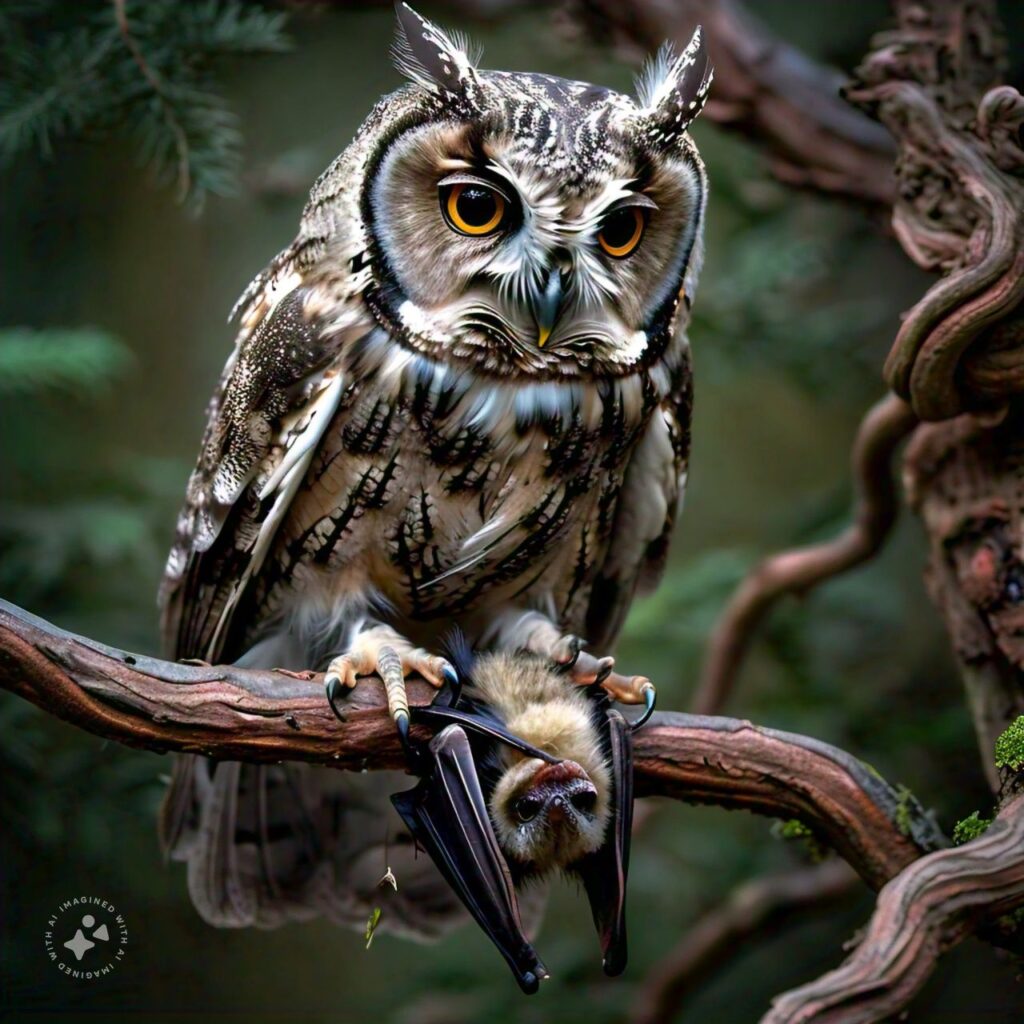16 Types of Owls in Texas
Texas, with its diverse ecosystems ranging from dense forests to arid deserts, is home to a wide variety of wildlife, including several fascinating species of owls. These birds of prey are renowned for their nocturnal nature, sharp vision, and distinctive calls. In this post, we’ll explore 16 different types of owls found across the state of Texas.
1. Eastern Screech Owl
The Eastern Screech Owl is a small owl species commonly found in wooded areas, suburban parks, and even backyards throughout Texas. They have excellent camouflage, with plumage that resembles tree bark, and they come in two color morphs: gray and red. Their distinctive “trill” call makes them easier to identify during the night.
These owls are highly adaptable and can thrive in both rural and urban environments. For more information on owls living in different states, check out the owls found in Michigan.
2. Barn Owl
Barn Owls are one of the most widely distributed owl species globally, and they are frequently found in Texas. Known for their heart-shaped face and striking white plumage, these owls prefer open fields, meadows, and barns where they can hunt small mammals, especially rodents.
Their eerie, raspy screeches are often heard at night, and they play a vital role in controlling the rodent population.
3. Great Horned Owl
The Great Horned Owl is Texas’s largest owl and is easily recognized by its prominent ear tufts, yellow eyes, and deep hooting call. This owl species inhabits forests, deserts, and even suburban areas. Its diet is diverse, ranging from rabbits and skunks to smaller birds and rodents.
The Great Horned Owl is a powerful predator, often referred to as the “tiger of the night.” If you’re interested in learning about more owl species in other regions, you might enjoy exploring Virginia’s owl species.
4. Burrowing Owl
Burrowing Owls are unique because, unlike most owls, they are active during the day. They prefer open landscapes like grasslands, deserts, and prairies. In Texas, they are often found near burrows that they either dig themselves or take over from animals like prairie dogs.
Their long legs and small size make them stand out among other owl species. Burrowing Owls are also known for their high-pitched “chattering” calls.
5. Barred Owl
The Barred Owl is known for its distinctive “who cooks for you” call. These owls have a round face with dark eyes and are primarily found in dense forests and woodlands near water bodies. In Texas, they can be spotted in the eastern regions where swamps and rivers provide them with the perfect habitat.
Barred Owls are more active during twilight hours and can be heard more frequently than seen due to their elusive nature.
6. Elf Owl
The Elf Owl is the smallest owl species in Texas, often no larger than a sparrow. They are found in the deserts and canyons of West Texas. With their small size and quick flight, Elf Owls are insectivores, mainly feeding on moths, beetles, and other insects.
Despite their size, these owls are fearless and have a high-pitched “whinnying” call that is often heard at night.
7. Short-Eared Owl
Short-Eared Owls are medium-sized owls that are typically found in open grasslands, marshes, and prairies. In Texas, they are migratory and are often seen during the winter months. Unlike most owls, they are frequently seen flying during the day, especially at dawn and dusk.
Their wings have a distinctive, buoyant flight, and they can be easily spotted hunting over open fields.
8. Long-Eared Owl
Long-Eared Owls, as the name suggests, have long ear tufts that make them easy to recognize. They are secretive and prefer dense forests where they can roost during the day. In Texas, they are less commonly seen but are known to inhabit the northern regions during the winter months.
These owls are excellent at hunting small mammals and have a haunting “hoo-hoo” call that echoes through the woods at night.
9. Flammulated Owl
The Flammulated Owl is a small, reddish-brown owl that migrates to Texas during the summer months. It is typically found in coniferous forests and is known for its quiet nature and soft, low-pitched hoots.
This owl primarily feeds on insects and is often difficult to spot due to its excellent camouflage.
10. Northern Saw-Whet Owl
The Northern Saw-Whet Owl is a tiny, elusive species with a round face and big yellow eyes. In Texas, they are rare but can be found in the northern forests. These owls have a distinctive “tooting” call that resembles the sound of a saw being sharpened, hence their name.
Despite their small size, these owls are fierce hunters, mainly preying on small rodents.
11. Western Screech Owl
The Western Screech Owl is similar to the Eastern Screech Owl but is more commonly found in the western parts of Texas. They have a gray or brownish coloration and a series of short, sharp calls. These owls are excellent at adapting to both desert and forest habitats.
Western Screech Owls are known for their ability to remain undetected due to their incredible camouflage skills.
12. Mexican Spotted Owl
The Mexican Spotted Owl is a larger species that inhabits the mountainous regions of West Texas. Known for its spotted plumage and dark eyes, this owl prefers dense forests and canyons. It is a nocturnal predator, primarily feeding on small mammals and birds.
Due to habitat loss, the Mexican Spotted Owl is considered a threatened species and requires protection in its natural habitats.
13. Snowy Owl
Although Snowy Owls are more commonly associated with colder climates, they are occasionally spotted in northern Texas during the winter months. Their striking white plumage makes them one of the most recognizable owl species.
Snowy Owls primarily hunt during the day, making them one of the few diurnal owl species. Their presence in Texas is rare, but when they do appear, they are often a sight to behold.
14. Ferruginous Pygmy Owl
The Ferruginous Pygmy Owl is a small, diurnal owl found in southern Texas, particularly in areas with dense vegetation. These owls are known for their bold behavior and are often seen hunting during daylight hours.
Their small size and reddish-brown coloration allow them to blend in with their surroundings, making them difficult to spot despite their active nature.
15. Whiskered Screech Owl
The Whiskered Screech Owl is similar in appearance to other screech owls but is characterized by the “whiskers” near its beak. These owls inhabit the mountainous regions of West Texas and are known for their soft trilling calls.
Whiskered Screech Owls are primarily insectivores and thrive in areas with plenty of dense foliage.
16. Great Gray Owl
The Great Gray Owl is one of the largest owl species in North America and is occasionally seen in northern Texas during the winter months. With its long wingspan and broad face, this owl is a formidable predator. It prefers open spaces like meadows and forests where it can hunt for small mammals.
The Great Gray Owl’s haunting calls and majestic appearance make it a rare but memorable sight for bird watchers.
Conclusion
Texas is home to a diverse range of owl species, each with its own unique characteristics and adaptations. From the tiny Elf Owl to the majestic Great Horned Owl, these birds of prey play a crucial role in the ecosystem by controlling rodent populations and maintaining the balance of nature. For more post visit here
and our blog
If you’re intrigued by these majestic creatures, you can explore more about different types of birds and owls across other states, such as the varieties found in Texas.


